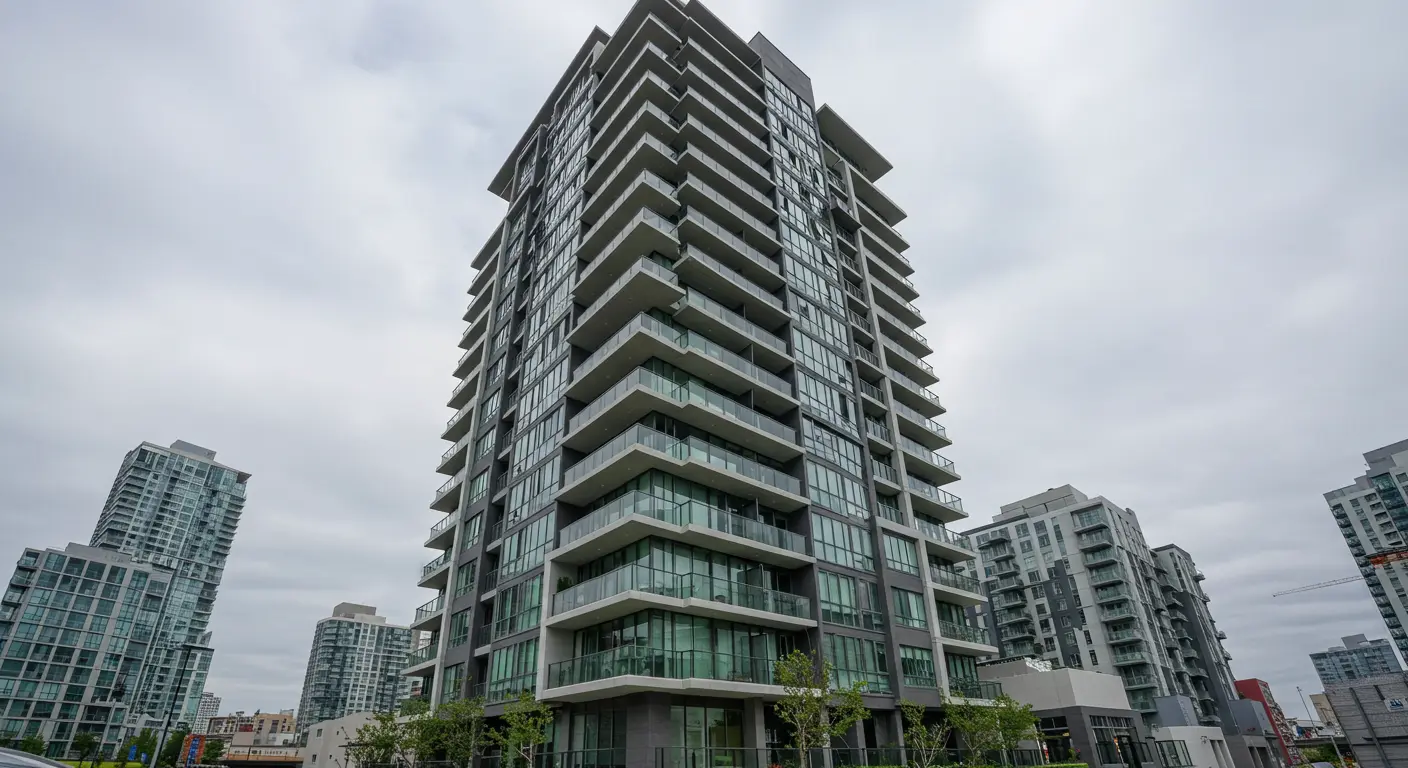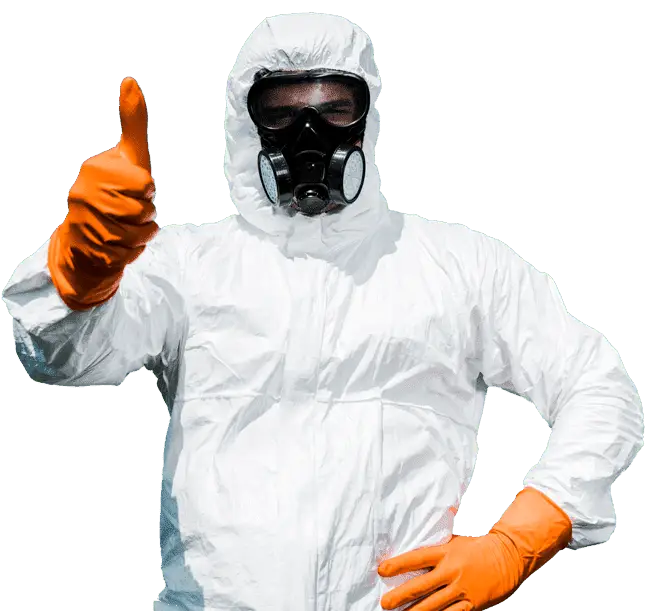Cockroach Control for High-Rise Apartments in Sydney
Home – Service Detail

Effective Solutions and Prevention Tips
Living in high-rise apartments in Sydney puts us at a higher risk for cockroach problems due to shared walls, connected plumbing, and warm indoor climates. Cockroaches are more than just a nuisance; they can spread bacteria like Salmonella and even trigger asthma, especially in kids and sensitive individuals.
Quick DIY sprays or store-bought traps might seem like easy fixes, but they rarely solve the problem for good. In apartment buildings, cockroaches can move between units through pipes and cracks, making it hard to stop an infestation without the right strategies.
We need to take a targeted approach to cockroach control that works for high-rise settings in Sydney. Understanding what attracts cockroaches and how they get inside our apartments helps us stay one step ahead.
For more about pest issues in Sydney, see this guide to cockroach control in Sydney apartments and homes.
Understanding Cockroach Problems in Sydney High-Rise Apartments
Cockroach infestations are common in Sydney’s high-rise apartments due to the city’s climate and the unique structure of multi-unit dwellings. Understanding how cockroaches survive and spread helps us protect our homes and health.
Why Cockroaches Thrive in Apartment Units
Cockroaches are very good at finding food, water, and shelter. High-rise apartments have many shared walls, pipes, and small cracks, which make it easy for cockroaches to travel from unit to unit.
Poor rubbish management and leftover food also attract these pests. Buildings with central rubbish chutes or older plumbing are especially at risk.
Cockroaches can crawl along pipes and wires, entering through gaps around sinks and drains. Sydney’s warm, humid weather creates the perfect environment for cockroaches to breed all year long.
Even if we keep our own unit clean, cockroaches can enter from neighbors’ units or common areas. This is why keeping all areas tidy and sealing entry points is important in high-rise living.
For more about why infestations are common in apartments, visit this guide to cockroach control in Sydney homes and apartments.
Risks of Cockroach Infestations
Cockroaches are more than just a nuisance. They can carry bacteria like Salmonella and E. coli, which can contaminate food and kitchen surfaces.
This increases the risk of food poisoning, diarrhea, and allergic reactions for us and our families. Their droppings, saliva, and shed skins can trigger asthma attacks, especially in children and the elderly.
Living in multi-unit dwellings means infestations can spread fast if not addressed quickly. Cockroaches may enter pantries, cupboards, and pet food containers, making it hard to keep food safe.
High-rise buildings with large populations are also at risk for repeated pest problems unless everyone takes action. Regular pest control and early reporting of problems by residents can help limit these health risks.
More details about the health threats are explained by experts warning of mass cockroach invasions in Sydney.
Common Areas Affected in Multi-Unit Dwellings
Cockroaches are most likely to be found in warm, moist, and dark places. In apartment units, they commonly hide in kitchens, behind fridges, under sinks, and near dishwashers.
Bathrooms, laundry rooms, and storage closets are also common spots because of moisture and clutter. In high-rise buildings, we need to be aware of shared spaces too.
Rubbish rooms, basements, and parking garages are often problem areas due to food waste and damp conditions. Cockroaches can travel easily between apartments by using electrical and plumbing lines.
A quick checklist of common problem areas:
- Under and behind appliances
- Inside cabinets and pantry shelves
- Garbage chutes and bins
- Shared laundry and storage rooms
Knowing where cockroaches are likely to hide helps us check for signs early. For more information on affected areas in Sydney homes, read about the causes and prevention of cockroaches in Sydney residences.
Identifying Cockroach Entry Points and Hiding Spots
Cockroaches find many ways to get into high-rise apartments. By learning where they enter and hide, we can take steps to block them and protect our living spaces.
Cracks and Crevices in Shared Walls
Cracks and crevices in shared walls are a major entry point for cockroaches. These small openings can form around windows, under baseboards, or near doors.
Cockroaches use these tiny spaces to move from one apartment to another without being seen. In high-rise buildings, shared walls connect multiple units.
Even the smallest gap can provide a path for roaches. They squeeze through narrow cracks thanks to their flat bodies.
We should inspect areas where building materials meet, such as molding or wall joints.
Tips to address cracks and crevices:
- Seal gaps with caulking or weather-stripping.
- Pay special attention to corners and behind kitchen cabinets.
- Regularly inspect for new cracks after repairs or renovations.
For more details on how cockroaches use these entry points, we can read about common entry points for cockroaches.
Plumbing and Utility Gaps
Roaches often enter through plumbing and utility gaps. Pipes run between kitchens, bathrooms, and laundry areas in high-rise buildings.
These spaces give cockroaches easy access to water, which they need to survive. Openings around pipes, drains, and electrical conduits can be hidden behind appliances or inside cabinets.
Some common hiding spots include under sinks, behind toilets, and around washing machines. Cockroaches also nest inside wall voids where pipes run.
We can help prevent roaches from using these gaps by:
- Filling holes around pipes with steel wool or foam sealant.
- Checking for leaks and fixing them quickly.
- Covering drains with fine mesh screens.
More details about roach nesting places near plumbing can be found at common cockroach hiding spots.
Common Pathways Between Apartment Units
Roaches can move between units using shared hallways, trash chutes, and ductwork. In high-rise apartments, these pathways connect many homes, allowing infestations to spread quickly.
Roaches may follow food smells or moisture from one apartment into another. Entryways like shared laundry rooms, storage closets, and utility shafts are hot spots.
Gaps around doors or under thresholds also let roaches in. Roaches can easily hide in clutter left in shared areas.
A few ways we can reduce risks in these areas include:
- Installing door sweeps and weather-stripping on entry doors.
- Keeping shared spaces clean and free from food debris.
- Reporting and fixing maintenance issues in common areas quickly.
To learn more about how cockroaches find routes between units, see cockroach entry points in homes.
Assessment and Monitoring Strategies
Effective cockroach control relies on knowing where pests are concentrated and spotting problems early. We focus on proven methods to track cockroach activity and recognize early warning signs before infestations grow.
Using Sticky Traps and Monitoring Tools
Sticky traps play a big role in pest monitoring. We place these traps in areas where cockroaches are most likely to travel, such as behind appliances, under sinks, and inside cupboards.
This helps us pinpoint exactly where activity is highest and determine whether action is needed. We check traps regularly and record the number of cockroaches caught.
This data helps us understand the pattern of movement inside apartments. If we notice a sudden increase in numbers, we know to focus treatment in those key areas.
In a high-rise apartment, traps work best in kitchens and places with food, as studies show populations are often highest near food and appliances.
Other monitoring tools like gel baits can also provide clues. If the bait is eaten quickly, it can signal a serious cockroach infestation.
Detecting Early Signs of Pest Infestations
Early detection is vital for controlling cockroach problems. We look for shed skins, egg cases, and droppings, which may appear as black specks near cracks, crevices, or along baseboards.
A musty smell or greasy marks on surfaces can also indicate their presence. Routine inspection is essential.
We check under refrigerators, stoves, and kitchen sinks, as these are common hiding spots. Seeing live cockroaches during the day often means the infestation has grown.
By catching these signs early, we can respond quickly before the pests spread to other units. More tips for effective inspection are available from pest experts managing German cockroaches in apartments.
More Services
Your complete solution from start to finish.
Have a Problem with Pests?
Our certified team offers fast, safe, and effective solutions to protect your property.
Why Choose Safe Pest Control?
Safety Matters
In Every Treatment
We prioritise your family, pets, and the environment by using eco-friendly, non-toxic solutions for effective cockroach pest control.

Experienced Professionals
Customized Treatments

Eco-Friendly Solutions
Transparent Pricing

Guaranteed Results
Fast and Responsive
Effective Cockroach Control Methods for High-Rise Apartments
We must tackle cockroach infestations with a combination of proven strategies. The size and layout of high-rise apartments present special challenges, so we need methods that address these unique factors.
Professional Pest Control Solutions
Hiring professional pest control experts is often the most effective way to remove cockroaches, especially in severe cases. These professionals have access to specialized tools, safe insecticides, and targeted baits that we cannot buy at the store.
Pest control teams inspect our apartments, identify problem areas, and choose the right treatment for the type of cockroach found. Regular, building-wide treatments often provide better results compared to isolated apartment efforts.
Integrated pest management plans help lower cockroach numbers in both apartments and common areas. According to experts in cockroach control, routine inspections are also key for catching new problems early.
Ongoing service contracts with a trusted provider mean we don’t have to wait for a problem to get out of hand. We can also get advice about sealing entry points and maintaining cleanliness as part of the service.
DIY and Non-Chemical Approaches
If we prefer to start with DIY methods, several options can help manage small infestations. We should focus on cutting off the food, water, and hiding spots cockroaches need to survive.
This means storing food in airtight containers, wiping down counters, and cleaning crumbs or spills right away. Sealing cracks and gaps around pipes, doors, and windows is another important step.
Sticky traps can help us monitor for cockroach activity and suggest where the problem is getting worse. Frequent vacuuming and emptying bins also reduce places for cockroaches to breed.
While DIY methods are best for light infestations or as a first step, severe or recurring outbreaks usually call for professional help. Our efforts matter most when everyone in the building follows the same cleanliness steps.
Eco-Friendly Pest Control Options
For those of us concerned about chemicals, eco-friendly pest control options are available. Common green solutions include diatomaceous earth, which can be sprinkled in corners and under appliances.
This powder is safe for humans but harms cockroaches by drying them out. Boric acid is another low-toxicity product often used in bait stations.
Maintaining a high standard of cleanliness is still the backbone of eco-friendly control. Using essential oil sprays made from peppermint or tea tree oil can also deter cockroaches, though these methods grow less effective in large infestations.
We should keep in mind that natural products work best in the early stages. For persistent problems, a mix of eco-friendly and professional treatments is sometimes needed for complete eradication.
Some pest control services in Sydney now offer green treatment plans as safer alternatives to standard chemicals, combining sustainability with effectiveness.
The Role of Strata and Building Management in Pest Prevention
Effective cockroach control in Sydney’s high-rise apartments depends on cooperation between strata managers, building management, and residents. Our shared spaces and unique building layouts make prevention and quick response essential.
Strata Pest Control Practices
Strata managers play a large part in organizing regular pest inspections and treatments for common areas such as hallways, garbage rooms, and basement car parks. These areas can quickly become hiding spots for cockroaches if left unchecked.
We rely on professional pest control teams to use safe methods and monitor infestations. In Sydney, pest control for strata buildings should be scheduled at least every six months, especially where infestations have been a concern.
In some cases, older buildings or those with complex shared spaces may need more frequent checks. Keeping up with these practices helps us protect all residents from the health risks that pests bring.
Timely action and good communication with all residents about treatment schedules are vital to making strata pest control effective. For more details on these approaches, Masters Pest Control Sydney gives insight into what professionals offer for different building types.
Policies for Maintaining a Pest-Free Environment
Clear building policies help us keep pests out long-term. To do this, we create simple rules for garbage disposal, regular cleaning, and reporting pest sightings.
Shared facilities like laundry rooms, waste chutes, and gardens need posted guidelines so everyone knows their part. It is a good idea for building management to keep clear records of all pest control visits and complaints.
This documentation makes it easier to spot patterns or recurring trouble areas. It also helps us adjust our pest management plan as needed.
Routine education for residents also plays a role, offering reminders about what attracts cockroaches and steps each person should follow. For example, advice at stratadata.com.au explains how a building’s size and design affect pest control needs, which helps shape our ongoing policies.

Don’t Let Cockroaches Take Over.
10% Off! When You Mention This Offer
Call now and save 10% when you mention this exclusive offer!
Choosing Reputable Pest Control Services in Sydney
Choosing the right pest control partner helps keep high-rise apartments free from cockroaches. Experience, safety methods, and quick services matter most for residents and building managers.
What to Look for in Pest Control Professionals
We should always check that the pest control experts are licensed and insured. Reliable companies often display this information on their websites or in documents provided before work starts.
Checklist when comparing pest control services:
- Experienced with high-rise apartments
- Offer long-lasting treatments (not just sprays)
- Provide written quotes and treatment plans
- Have a clear satisfaction or guarantee policy
Some companies in Sydney provide a 6-month satisfaction guarantee with free re-treatment if the problem is not solved. Using professional pest control instead of over-the-counter sprays makes a big difference in effectiveness, as experts use safer and more thorough solutions.
We should also confirm that their methods are safe for both people and pets. All reputable Sydney pest control services should explain what is being done and give advice to help prevent new infestations.
Benefits of Local Expertise
Choosing pest control experts who know Sydney helps us deal with the exact types of cockroaches and building issues found in this city. Local providers understand how climate, building styles, and apartment layouts affect pest problems.
These professionals often use modern control methods matched to each property’s needs. For example, some use eco-friendly approaches and offer both prevention and proofing steps for ongoing protection against cockroach invasions.
Their fast response is key, especially in busy apartment buildings where pests spread quickly. Using a trusted local service can also mean quicker follow-up if a problem returns.
Many trusted teams in Sydney provide competitive prices, tailored solutions, and helpful advice to reduce future risks. This makes them a smart choice for apartment residents seeking thorough cockroach pest control in Sydney.
Preventing Future Cockroach Infestations
Keeping cockroaches out of our high-rise apartments depends on strong cleaning habits and smart changes in how we live. Clean spaces and teamwork from residents are key to making our building less appealing to pests.
Apartment Cleaning and Maintenance Tips
To make apartments less attractive to cockroaches, we should focus on daily cleaning. Wipe down kitchen surfaces and sweep up crumbs right away.
Always wash dirty dishes instead of leaving them in the sink overnight. Store food in sealed containers and avoid leaving pet food out.
Garbage control is important. Take out the trash often and keep bins tightly closed.
Check under sinks for leaks, since cockroaches are drawn to water. Fix broken tiles and seal cracks along floors, walls, and around pipes.
This prevents pests from hiding and entering. Use a simple checklist for regular tasks:
| Task | Frequency |
|---|---|
| Empty kitchen bins | Daily |
| Clean up food spills | Immediately |
| Check for water leaks | Weekly |
| Seal cracks/holes | Monthly |
Professional pest control can also help manage bigger problems if they come up. More detailed tips are available in guides from Sydney pest control experts.
Resident Behavior and Education
Our habits influence how likely cockroaches are to move into our apartments. Avoid leaving food out in living areas.
Remind everyone in the apartment to keep shared spaces clean, especially kitchens and bathrooms. Creating clear rules for trash disposal and recycling helps limit cockroach infestations.
Educate new tenants about pest risks specific to our high-rise environment. We can use signs, flyers, or meetings to share information about prevention.
It helps to know the warning signs, like droppings or egg cases, and report them quickly. For more ways to educate and protect against cockroaches, take a look at detailed prevention tips.
Managing Other Common Pests in Sydney Apartments
In Sydney apartments, pests like rodents, ants, spiders, termites, and bed bugs can quickly become a problem if not managed early. These pests often look for food, water, and shelter inside our homes, especially in high-rise buildings.
Dealing with Rodents
Rodents such as rats and mice often enter apartments through small gaps or vents. They are attracted by food scraps, leaking pipes, and cluttered areas.
If we hear scratching in the walls or see droppings, this is usually a sign that rodents are present. To manage rodents, we should keep all food in sealed containers and take out the rubbish daily.
Fixing leaks and blocking entry points with steel wool or silicone sealant helps keep them out. Traps and baits can be used for small infestations, but for larger problems it’s best to contact pest control.
Rodents are a health risk as they can carry diseases and contaminate food, so quick action is key.
Preventing Ants and Spiders
Ants are common in Sydney, especially in warm months. They usually enter apartments through cracks or gaps around windows and doors.
Ants are drawn to sweet or greasy foods, so it is important that we clean crumbs and spills right away. We can use the following tips to prevent ant and spider problems:
- Wipe down surfaces with vinegar or soapy water
- Seal gaps around doors and windows
- Remove food and water sources
Spiders, while often harmless, can also find their way inside. Reducing clutter, vacuuming corners, and removing webs can discourage them from settling in.
Using window screens and filling cracks helps keep spiders out. If dangerous spiders are found, professional pest control should be called in.
Learn more about common pests in Sydney and ways to prevent them.
Awareness of Termites and Bed Bugs
Termites don’t usually live inside apartments, but they can become a structural threat if they reach the building. They are attracted to wood and moisture.
Checking for soft or hollow timber, mud tubes, and faint clicking sounds can help us catch early warning signs. Bed bugs are small insects that hide in cracks, mattresses, and bedding.
They feed at night and cause itchy red bites. Signs of bed bugs include blood spots on sheets and a musty smell.
We should check secondhand furniture before bringing it inside. Termite issues usually require a professional inspection since DIY methods are often not enough.
For bed bugs, we need to wash bedding in hot water, vacuum thoroughly, and use mattress covers. If bed bugs keep coming back, calling pest control is necessary.
More about cockroach and pest problems in Sydney apartments can be found online.
Get Intouch Today
Expert Help Today
Get in touch for quick and thorough cockroach control solutions
Frequently Asked Questions
We often get asked detailed questions about cockroach control in high-rise apartments across Sydney. Many apartment residents want to know about costs, DIY solutions, professional services, and keeping their homes safe from pests and health concerns.
We see the best results from a mix of targeted gel baits, non-repellent insecticides, and proper sanitation routines. These steps work well in shared walls and utility pipes common in apartment buildings.
Many pest control companies in Sydney rely on gel baits and insect growth regulators for long-term effects in high-rise settings.
Most services charge a fee that can range based on the size of the apartment and the level of the infestation. In Sydney, standard treatment for cockroaches often starts from about $120 to $300 for a single apartment unit.
Extended treatments or multiple visits may cost more, especially when dealing with German cockroach infestations that are hard to remove.
Some of the best-reviewed options include Sydney Pest Crew and Iconic Pest Solutions. These companies are known for their experienced technicians and effective cockroach control in apartments.
Many customers have praised their quick response and targeted treatments for multi-unit buildings.
Yes, we can try using gel baits, sticky traps, and boric acid powder in common cockroach hiding places like under sinks and behind fridges. We should also block cracks and holes, keep kitchens clean, and regularly empty bins.
Still, for widespread infestations, DIY solutions may not be strong enough and professional treatment might be needed.
We need to keep our apartments free of food scraps, quickly fix any leaking pipes, and seal up entry points such as gaps under doors and in walls. Storing food in airtight containers and taking out the garbage daily helps too.
Regular cleaning—especially in kitchens and bathrooms—makes our homes less attractive to cockroaches.
Cockroaches can carry bacteria that lead to food poisoning.
They can trigger allergies or asthma, especially in children.
Their droppings, shed skins, and saliva can impact indoor air quality.
They can also spread germs on surfaces where we prepare food.
